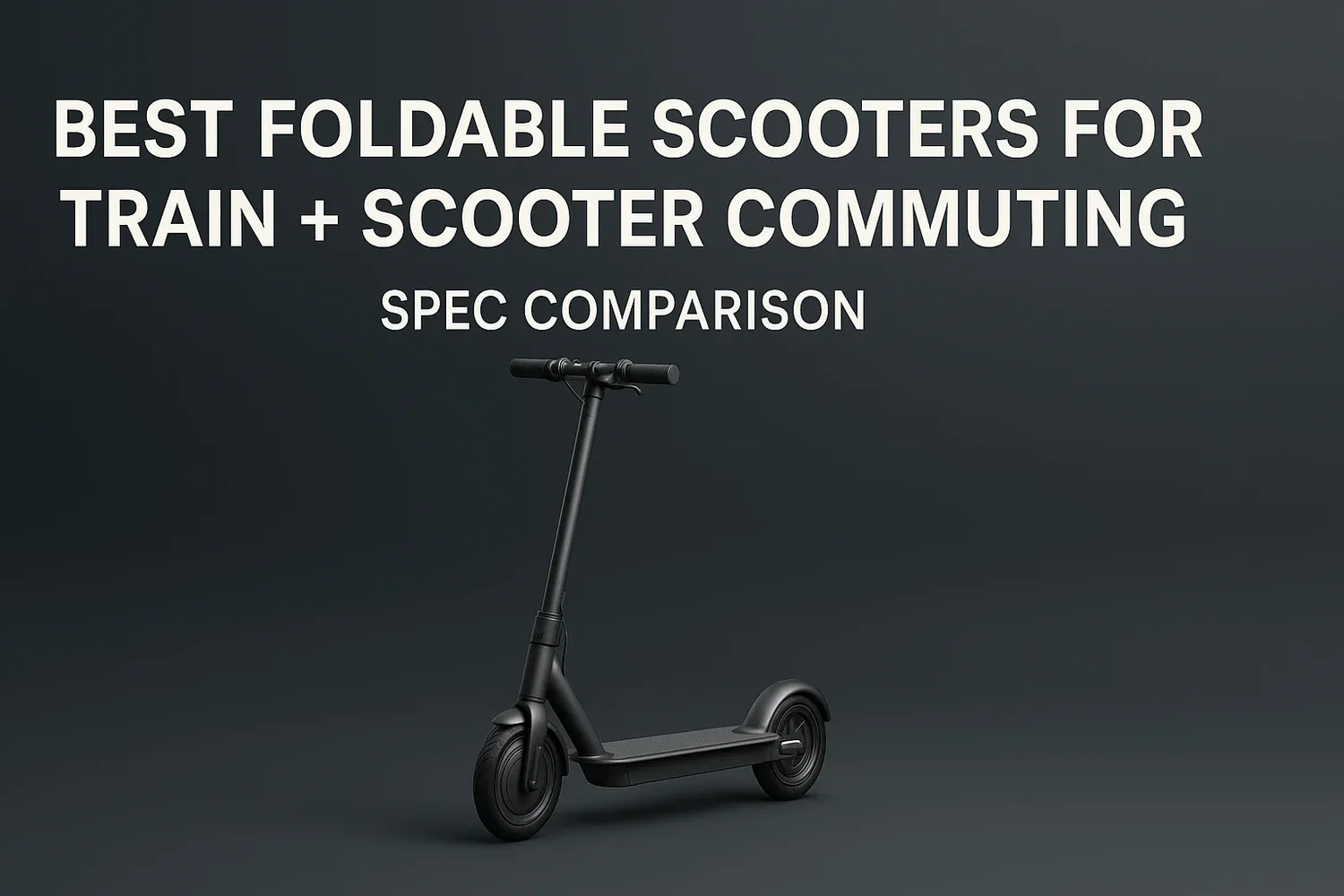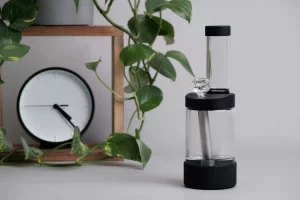Crowded platforms. Tight turnstiles. Two flights of stairs before you even hit the street. Train + scooter commuting is fantastic once you dial in the right setup, yet the wrong scooter can turn every transfer into a chore. This guide zeroes in on fold speed, carry weight, and folded size, because those are the details that make daily multimodal trips smooth. For quick context on the broader market, explore Electric Scooters in the first few paragraphs of your research, then come back here to compare the best compact performers. You’ll find practical picks, a clean spec table, and short hands-on style notes that highlight real commuter trade-offs. By the end, you’ll know which model fits your stairs, your storage, and your route.
How We Test & Pick
Train-first commuting rewards practicality over flash, so our criteria put carrying and folding at the top. We timed each fold from “ready to ride” to “securely latched,” then repeated the sequence to check consistency. We weighed scooters on a scale and measured folded dimensions to see what actually fits under seats, into overhead racks, and through elevator doors. We also walked each model up a typical station staircase to assess balance points and carry comfort.
Beyond portability, we looked at stability around 20–25 km/h, since that’s where most urban commuters cruise. Tire type, deck length, and stem stiffness strongly affect confidence, especially on patched asphalt and platform edges. We evaluated braking on dry and damp pavement, paying attention to lever feel and regen tuning, because last-meter control matters when you’re threading through crowds. Finally, we tracked range and charge time across 10–20 km day-to-day patterns.
If you want deeper impressions before shortlisting, browse our long-form Electric Scooter Reviews and then return to the spec comparison below to map what you’ve learned to concrete dimensions and weights.
At-a-Glance Winners
Lightest Carry — Hiboy S2 Lite: Among the lightest options here, it eases stairs and quick transfers.
Fastest Fold — E-TWOW GT SE: Simple clamp design and practiced one-hand fold keep dwell time low.
Best for Small Apartments — Unagi Model One (E500): Slim folded footprint and tidy cables reduce indoor clutter.
Best Range Under 15 kg — Inokim Light 2: Efficient motor and pneumatic tires stretch real-world distance.
Best Budget Commuter — GoTrax GXL V2: Affordable, predictable, and serviceable with common parts.
Spec Comparison: Foldable, Train-Friendly Scooters
If you prefer to skim first, start with the quick matrix below. It groups the most commuter-relevant specs in one place: weight, fold size, time to fold, and the basics that determine comfort and safety on mixed terrain. For full catalogs and brand-by-brand data, you can cross-check individual models via Electric Scooter Specifications and then hop back to this page to decide.
Model
Weight (kg/lb)
Folded Size (L×W×H)
Fold Time
Carry/Trolley
Range (km/mi)
Top Speed (km/h, mph)
Tires
Suspension
Brakes
IP Rating
Charge Time
App/Tracking
E-TWOW GT SE
12.3 / 27.1
108×15×33 cm (42.5×5.9×13 in)
~3 s
Hand carry
30 / 19
35, 22
8″ solid
Front spring
Rear drum + regen
IPX4
3–4 h
No
NIU KQi Air
11.9 / 26.2
112×42×48 cm (44×16.5×19 in)
~5 s
Hand carry
30–40 / 19–25
32, 20
9.5″ tubeless
None
Front drum + regen
IP55
5–6 h
Yes
Unagi Model One (E500)
12.0 / 26.5
97×42×38 cm (38×16.5×15 in)
~5 s
Hand carry
20–25 / 12–16
27, 17
7.5″ solid
None
Dual electronic + rear foot
IP54
4–5 h
No
Xiaomi Electric Scooter 3 Lite
13.2 / 29.1
108×43×48 cm (42.5×17×19 in)
~5 s
Hand carry
20–25 / 12–16
25, 16
8.5″ pneumatic
None
Rear disc + regen
IP54
4–5 h
Yes
GoTrax GXL V2
12.1 / 26.7
107×43×41 cm (42×17×16 in)
~5 s
Hand carry
20–27 / 12–17
25, 15.5
8.5″ pneumatic
None
Rear disc + regen
IP54
4–5 h
No
Hiboy S2 Lite
10.4 / 22.9
100×42×33 cm (39×16.5×13 in)
~5 s
Hand carry
10–15 / 6–9
20, 12
6.5″ solid
None
Electronic + rear foot
IP54
3–4 h
Yes
Inokim Light 2
13.7 / 30.2
108×46×36 cm (42.5×18×14 in)
~6 s
Hand carry
30–35 / 19–22
33, 21
8.5″ pneumatic
None
Front caliper + rear drum
IPX4
5–6 h
No
Segway Ninebot E2 Plus
14.4 / 31.7
114×42×50 cm (45×16.5×19.7 in)
~5 s
Hand carry
20–25 / 12–16
25, 16
8.1″ solid
None
Electronic + rear drum
IPX4
4–5 h
Yes
Notes: Folded sizes are measured at the widest points. Real-world ranges vary with rider weight, terrain, temperature, and speed. For daily commuting, plan around 60–70% of the claimed maximum; you’ll keep battery health happier and headroom for detours.
The Shortlist
E-TWOW GT SE — Fast Fold, Small Footprint
The GT SE is built for speed between stops. The fold clamp is simple, the stem locks securely, and the deck remains manageable when you need to one-hand it up stairs. Solid tires remove flat worries, and the front spring takes the edge off joints and expansion strips. Steering feels quick but predictable, which helps when you slip into gaps at low speed. Power is tuned for urban starts rather than top-end thrills, therefore it feels efficient rather than dramatic. Braking mixes regen with a rear drum, so modulation stays steady even if your hands are damp from rain. You’ll sacrifice some comfort on broken pavement, yet the weight savings are worth it for multimodal routines.
Pros: very fast fold; compact deck; low maintenance tires.
Cons: firmer ride; limited app features; small deck for large shoes.
Best for: riders who prioritize short transfer times and minimal footprint.
NIU KQi Air — Light, Refined, and App-Enabled
The KQi Air keeps the mass down while still offering a stable ride thanks to its geometry and larger tubeless tires. The cockpit is tidy, the stem feels rigid, and the deck offers enough length for a relaxed stance. You also get an app with basic ride metrics and lock functions, which helps in office settings. Because the tire volume is higher than most ultralights, comfort remains good even on older city streets. The fold is simple and secure, and the balanced weight distribution makes hand carries feel natural. Range stands out for the weight class, so you can handle multi-errand days without fretting. Brakes deliver predictable feel in the wet, too.
Pros: excellent weight-to-range ratio; tubeless tires; helpful app.
Cons: premium price; no suspension; slightly wider folded width.
Best for: commuters who want light carry plus day-to-day polish.
Unagi Model One (E500) — Apartment-Friendly Minimalist
Unagi’s slim silhouette pays off indoors. The folded height stays low, the bars sit close to the stem, and cables hide neatly, so it stores under tables and in narrow closets. Dual electronic braking keeps maintenance simple, while the rear foot brake gives a useful backup on steep ramps. Because the tires are solid, you give up some comfort; however, the deck and stem geometry help the scooter track straight at commuting speeds. The fold action is quick and clean, and the latch feels positive. It won’t win drag races, yet it shines in tight spaces and looks tidy parked next to a desk.
Pros: compact and sleek; very little maintenance; low indoor footprint.
Cons: firmer ride on rough roads; modest range; limited brake feel versus mechanical discs.
Best for: small apartments, dorms, and offices with strict storage rules.
Xiaomi Electric Scooter 3 Lite — Balanced Basics, Familiar Feel
Xiaomi’s 3 Lite keeps the formula friendly: modest weight, pneumatic tires for grip, and a fold that works the same every time. The stem clamp is straightforward, and the latch holds without rattle, so you can move quickly between train doors and platforms. The deck provides just enough length for staggered feet, and the cockpit is readable at a glance. You get regen plus a mechanical rear disc, therefore braking stays progressive even when surfaces change. Range won’t set records, but daily commutes under 15 km feel easy. Maintenance remains manageable because tubes and tires are common sizes.
Pros: predictable handling; common service parts; clear controls.
Cons: average acceleration; limited weather sealing; no suspension.
Best for: riders who value familiarity, parts availability, and a gentle learning curve.
GoTrax GXL V2 — Budget Workhorse with Real Tires
The GXL V2 earns its spot by doing the basics well at a friendly price. Pneumatic tires keep grip and comfort acceptable on mixed pavement, while the rear disc brake gives consistent stopping power. The fold is simple, and the carry weight sits in the sweet spot for a single flight of stairs. Because the deck is narrow, you’ll place feet carefully; however, stability remains fine up to typical city speeds. Range is modest, yet charge times are short enough to top up at the office. For many new commuters, the GXL V2 becomes a reliable first step into multimodal travel.
Pros: affordable; serviceable components; predictable braking.
Cons: basic finish; modest power; little weather protection beyond light drizzle.
Best for: price-conscious commuters who want real tires and simple upkeep.
Hiboy S2 Lite — Lightest Carry, Quick City Hops
If your station includes long staircases, mass matters more than anything. The S2 Lite keeps weight impressively low, so carrying with one hand feels manageable even for smaller riders. The fold is quick, and the latch holds tight. Because the tires are small and solid, ride quality remains firm; choose smooth streets where possible. Braking relies mostly on electronic intervention with a rear foot assist, which keeps maintenance easy but reduces fine control on wet surfaces. For short, flat last-mile hops, though, the convenience trade-offs make sense.
Pros: ultralight; compact folded size; simple maintenance.
Cons: firm ride; shorter range; less braking power in the wet.
Best for: short, flat transfers where stairs dominate your day.
Inokim Light 2 — Longest Legs Under 15 kg
The Light 2 feels composed thanks to its balanced geometry and pneumatic tires. It remains easy to carry, yet it stretches range farther than most ultralights. The cockpit is simple and durable, and the braking system combines a front caliper with a rear drum for dependable modulation. Folding takes a touch longer than the quickest designs, but the result is sturdy and rattle-free. Because the brand prioritizes serviceability, you’ll find parts more easily than with boutique ultralights. It’s a strong choice if your daily loop pushes beyond 15 km and you still want a sub-14 kg package.
Pros: efficient range; stable tracking; service-friendly design.
Cons: slightly slower fold; higher cost than entry models; no suspension.
Best for: longer commutes that still require frequent station transfers.
Segway Ninebot E2 Plus — Confidence at a Friendly Pace
The E2 Plus focuses on calm, predictable commuting. The deck is reasonably spacious, the stem feels solid, and the controls are intuitive. Solid tires avoid flats, which is reassuring on days when you can’t afford delays. Braking blends electronic assistance with a rear drum, so stops stay consistent in light rain. The fold is quick, and the latch is easy to verify by feel. Weight creeps above some ultralights, yet the trade-off buys you a planted ride and an accessible learning curve.
Pros: stable and easy to ride; dependable brakes; clear display.
Cons: heavier than pure ultralights; firmer ride versus pneumatics; modest range.
Best for: new commuters who want a no-drama setup with straightforward controls.
Buying Guide: What Actually Matters on Trains
Folded Size vs. Storage
Measure your bag, your desk gap, and the train’s under-seat clearance. Some commuter cars have low crossbars that block taller stems when folded. Therefore, prioritize folded height and handlebar width first, not just length.
Weight & Carry Points
Stairs expose poor balance instantly. A good commuter scooter lets you grab near the stem clamp with your wrist neutral. Rounded edges matter because sharp clamps dig into your palm. If you climb more than one flight daily, aim for ≤13 kg.
Fold Mechanisms
Fast is good, secure is better. A fold that clicks positively reduces rattle and prevents mid-carry slips. Double-locking clamps add confidence, especially when sprinting between platforms.
Tires & Comfort
Pneumatic tires cushion cracks and improve wet grip; however, they can puncture. Solid tires remove flats and reduce maintenance, yet they ride firmer. On patched asphalt, a quality pneumatic feels safer at 20–25 km/h.
Brakes & Safety
Mechanical discs or drums paired with regen keep lever feel consistent across conditions. Electronics alone can feel binary. Test lever reach with gloves, and practice on damp surfaces before the Monday rush.
IP Ratings & Rain Reality
Light rain is common during commutes. IP54 or better helps, but don’t treat any scooter like a submarine. Wipe the deck and ports at the office, and avoid standing water near platform edges.
Range, Speed, and Battery Health
Most mixed commutes total 6–12 km per day. Therefore, any scooter with a true 20 km range works, provided you can charge when needed. Keeping daily discharge shallow improves battery longevity.
Maintenance & Parts
Choose common tire sizes and standard brake pads where possible. Access to tubes, calipers, and clamps saves time and money over a season of riding.
Real-World Scenarios
30-Minute Mixed Commute
Ride 1.2 km to the station, fold in under five seconds, board, then unfold in the next city and cruise another 2 km. With practice, the sequence becomes automatic. A secure latch and balanced carry shave precious seconds during transfers.
Apartment & Office Policies
Many buildings allow scooters if they’re clean and folded. Keep a small towel or wheel sleeve in your bag. Because folded scooters still take space, pick a model with a low folded height to slide under desks.
Bad-Weather Plan
Pack a compact rain shell and grippy shoes. Lower speed in drizzle, brake earlier, and give yourself extra time through doors and ramps. Dry the scooter at the office to prevent long-term corrosion.
FAQs
What’s a good folded size for crowded trains?
Under ~50 cm folded height and ~45 cm handlebar width tends to slide under seats and through older turnstiles.
How heavy is too heavy to carry up stairs?
Most riders find 13 kg comfortable for one flight. For multiple flights, target 12 kg or less.
Are solid tires okay for daily commuting?
Yes, if your streets are smooth. For older pavement or frequent rain, pneumatics provide better grip and comfort.
Do I need suspension for city streets?
Not necessarily. Quality pneumatic tires solve most harshness. Lightweight commuters often skip suspension to save mass and complexity.
How water-resistant should my scooter be?
IP54 or better is advisable for urban drizzle. Still, avoid deep puddles and always dry the deck and charge port afterward.
Conclusion
For train + scooter commuting, a fast, reliable fold and a manageable carry weight transform your day. Start with your staircase and storage constraints, then match them to folded height and handlebar width. Next, choose tire type and braking for your streets and weather. Finally, ensure your real-world range covers your route with margin. Use the matrix above to shortlist two or three candidates, then test which one actually fits your hands, your building, and your rhythm.



